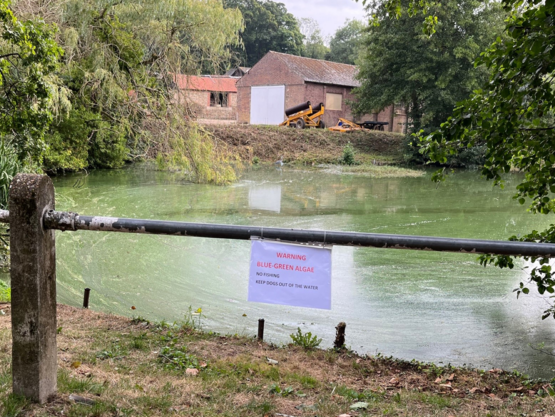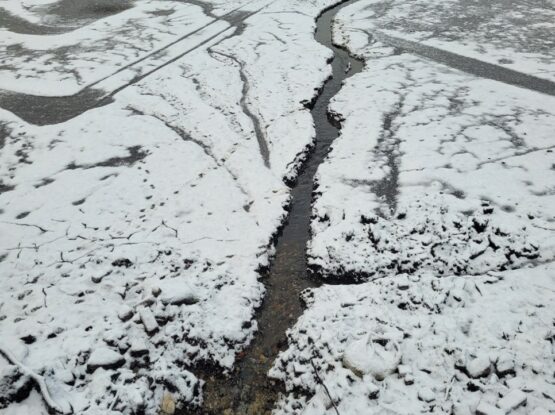Farming in Protected Landscapes Case Study:
Polstead Pond Restoration Project

For Years 2 and 3 of the Farming in Protected Landscapes programme, £36,709 has been awarded to farmers F&H Engleheart for restoration of historic Polstead pond.
Objectives
The cornerstone of the project is the comprehensive de-silting of Polstead Pond: a popular amenity for the local community and Dedham Vale National Landscape visitors, and an asset for the farm.
The pond has not been desilted for 75 years, and as a result is now very vulnerable to summer algal blooms (including toxic blue-green algae): a danger to wildlife.
Together with essential contributions from Hadleigh and District Angling Society, the Environment Agency and Polstead Parish Council, a major project is underway to remove the silt.
The pond has been netted and the fish removed to a temporary location. Then early in December the pond will be gradually drained, and allowed to dry out as much as possible until January when excavators will come in and begin to remove the silt. The excavators will bring the silt to the farmyard and tractors/trailers/dumpers will then transport it 100 yards up the road and into a grass meadow.
When the pond is empty, banks will be reprofiled to allow a diverse collection of native water plants to be planted in the shallows. Three new fishing platforms will also be constructed to improve access for the anglers. The project will achieve a depth of ‘free’ water appropriate to 8 to 10 feet, supporting a wide range of aquatic flora and fauna.
Additionally, the risk of a significant and rapid further decline in wildlife and plants will have been materially reduced. We expect the work to complete during February and the pond will then be refilled and restocked with a lesser number of fish which over time is expected to improve their health and size.
Learning
Farmer John Engleheart invited local children who are interested in seeing hundreds of fish being caught with giant nets, or seeing excavators, dumpers and tractors hauling 4,000 tonnes of silt, to come down and watch. There will also be an opportunity for metal detecting enthusiasts to see what they can find from the relocated silt.

On Monday 12th December, the National Landscape team visited the pond to see how the project is progressing. The pond was almost drained, although a mud-bank had formed and so a channel will be cut into this to allow the last of the water to flow out.
This is how the pond looked on a cold, snowy day, as the last of the water drained through the ice. All the fish are safely moved to a temporary home, and when they return it will be in reduced numbers to allow them to thrive and grow.
Here are the diggers in action, clearing away 75 years of built-up silt and layers of dead leaves. Before starting work, surveys were carried out to ensure there were no water voles or newts who would be damaged by the work.
The area around the pond will be re-seeded with grasses and wildflowers and it is hoped that by year 5, there will be a good range of submerged and marginal aquatic vegetation in the pond to enhance the biodiversity and amenity value of the pond and visitors and wildlife will be able to fully enjoy this peaceful spot.

